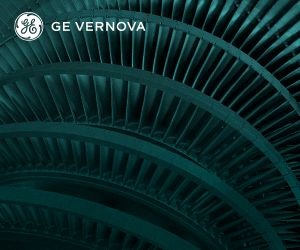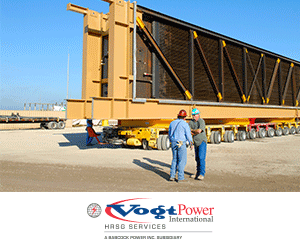It’s no secret, many of the electric power industry’s most capable engineers and technicians have retired recently or will do so in the next couple of years. But not Dave Lucier, founder and general manager of PAL Turbine Services LLC, headquartered near GE’s Schenectady works. He recently celebrated 50 years of service to the industry and has no intention of calling it quits.
Gas turbines and Lucier have been “connected” almost since these machines were first used to generate power in the US. He was introduced to GTs in the early sixties by the mechanical engineering faculty at UMass Amherst, graduating only a few months after the Northeast Blackout in November 1965.
GE hired Lucier and enrolled him in its fledgling field engineering program. The crush of new business demanded capable, travel-flexible engineers for installs, startups, overhauls, and troubleshooting. It was a fossil steam world at that time and very few in the industry knew much about gas turbines. The OEM’s Schenectady school turned out some of the finest GT field engineers in the world.
Lucier is passionate about gas turbines and recently shared his knowledge with the editors on the first three decades of their development, focusing on GE engines for power generation. The beginning: In June 1949, Oklahoma Gas & Electric Co launched the gas-turbine era on this side of the Atlantic by starting up a 3.5-MW GE Frame 3 at the utility’s Belle Isle Station.
What’s interesting about Belle Isle is that the gas turbine was part of a combined cycle; it was not a simple-cycle machine as you might have expected. Also interesting was that this and other early combined cycles married GTs and conventional boilers, most often the gas turbines substituting for forced-draft fans. At Belle Isle, the oxygen-rich exhaust gas was used for preheating feedwater.
The first pre-engineered combined cycle integrating the Brayton (gas turbine) and Rankine cycles (HRSG and steam turbine) was installed by the Ottawa (Kans) Municipal Electric Dept in 1967. This 11-MW single-shaft unit, powered by a GE Frame 3 is still in service today. About a year later, when Lucier graduated from the GE field engineering program, the first STAG™ (for STeam And Gas) combined cycle equipped with a Frame 5 was started up by the Wolverine Electric Power Supply Co-op Inc in Cadillac, Mich. This unit, also still active, was rated 21 MW.
Gas turbines not just for power generation. The turbojet engine came into prominence just as World War II was ending. Renowned British design engineer, Sir Frank Whittle, developed an engine in the post war period that is reminiscent of early GE multi-combustor gas turbines. GE and others were looking for applications for this new technology in the late 1940s and Whittle was said to have conferred in Schenectady during the war.
There were at least three obvious commercial applications for gas turbines: planes, trains, and automobiles. Companies like GE, Pratt Whitney, and Rolls Royce responded to meet the demand for jet engines in global air travel. The Union Pacific Railroad experimented with gas turbine/generators on about 50 locomotives operating in the West, beginning in 1948. Power was generated for the drive motors on the wheels. But the high-frequency whine from the compressors was viewed as unacceptable when passing through cities and towns. Compressor noise attenuation technology came later, when gas turbines were applied to land-based powerplants.
The gas turbine also had some success in automobile applications. The first GT-powered auto Lucier remembers was the Jet One roadster, introduced in the early 1950s in England. Poor gas mileage was an early issue for those wanting to drive long distances. It wasn’t until the regenerative cycle was refined for auto applications did the idea of a gas-turbine-powered car become more acceptable. However, compressor whine was objectionable to most, as GT cars passed by street observers.
On the oval, the Granatelli-sponsored gas-turbine race car nearly won the Indianapolis 500 in 1967. A failed part in the transmission (nothing to do with the engine) took it out of contention after leading nearly the entire race. Nevertheless, it didn’t win the race and few people remember just how competitive the turbine-powered car was. One reason is that the rules were changed the following year, so the turbine cars couldn’t meet the displacement requirements versus piston engines.
The first “peakers.” In the small Vermont town of Rutland, circa 1951, three innovative Frame 3 gas turbine/generators were installed under one roof. Rated only 4 MW each, the intercooled, regenerative-cycle, two-shaft engines with fuel regulator controls would start on No. 2 distillate oil and transfer to a heavier fuel oil during operation. The final unit was retired in the early 1990s.
The first “bubble.” In the early 1960s, GE was selling only a handful of Frame 5 so- called “package power plants” annually. Then came the Northeast Blackout and as the 1960s came to a close, the OEM was shipping over 100 units per year from Schenectady. The power industry recognized the GT as a good (and necessary) product for black-start, emergency, and peaking applications. Installation time was short once a flat foundation with rebar and anchor bolts was poured and cured. Some units became operational within a few months
Larger gas turbines were desired, but GE didn’t have one—yet. Instead, the OEM sold Frame 5s in two and four-unit power-block configurations to electric utilities from Brooklyn to San Diego. A few examples: Chicago’s ComEd bought 68 units, New York’s ConEd 48, Washington’s Potomac Electric 16, and San Diego Gas & Electric eight. ComEd put its units around Chicago and in nearby towns, Potomac Electric installed its GTs to provide emergency power for the Capitol and White House.
Unique among these early projects was the 32 ConEd Frame 5s installed on four barges in Gowanus Bay—factory-assembled and pretested. Each eight-unit barge was equipped with a control house, power transformer, and black-start capability. The 32-engine installation could deliver 622 MW when operating on distillate oil with 95F inlet air. Four captive 1-million-gal fuel-oil barges moored to the turbine barges enabled full power production for 50 hours with 40F ambient air.
After the blackout, it took GE about five years to develop and manufacture the first Frame 7A in Schenectady. This prototype was sold to Long Island Lighting Co. Problem was the Frame 7 didn’t have a diesel starting engine, so it wasn’t a black-start machine. Nor was it capable of “dead-bus” starts. But it did approach the desired targeted output threshold.
Subsequent Frame 7B, 7C, and 7E gas turbines were made at GE’s new facility in Greenville, SC, beginning in the early 1970s. Frame 5s were manufactured in Schenectady into the late 1980s.
In 1978, GE-Schenectady developed the Frame 6B, looking to capture an emerging co-generation market. Those applications were located near a “steam host”—a plant requiring steam for process. Once the pressure dropped to a useful level (say 200 psig), it was used in the host’s process. Pressure reduction often was accomplished using a small steam turbine/generator, adding to the plant’s electric production capability. Cycle efficiency approached 50%.









